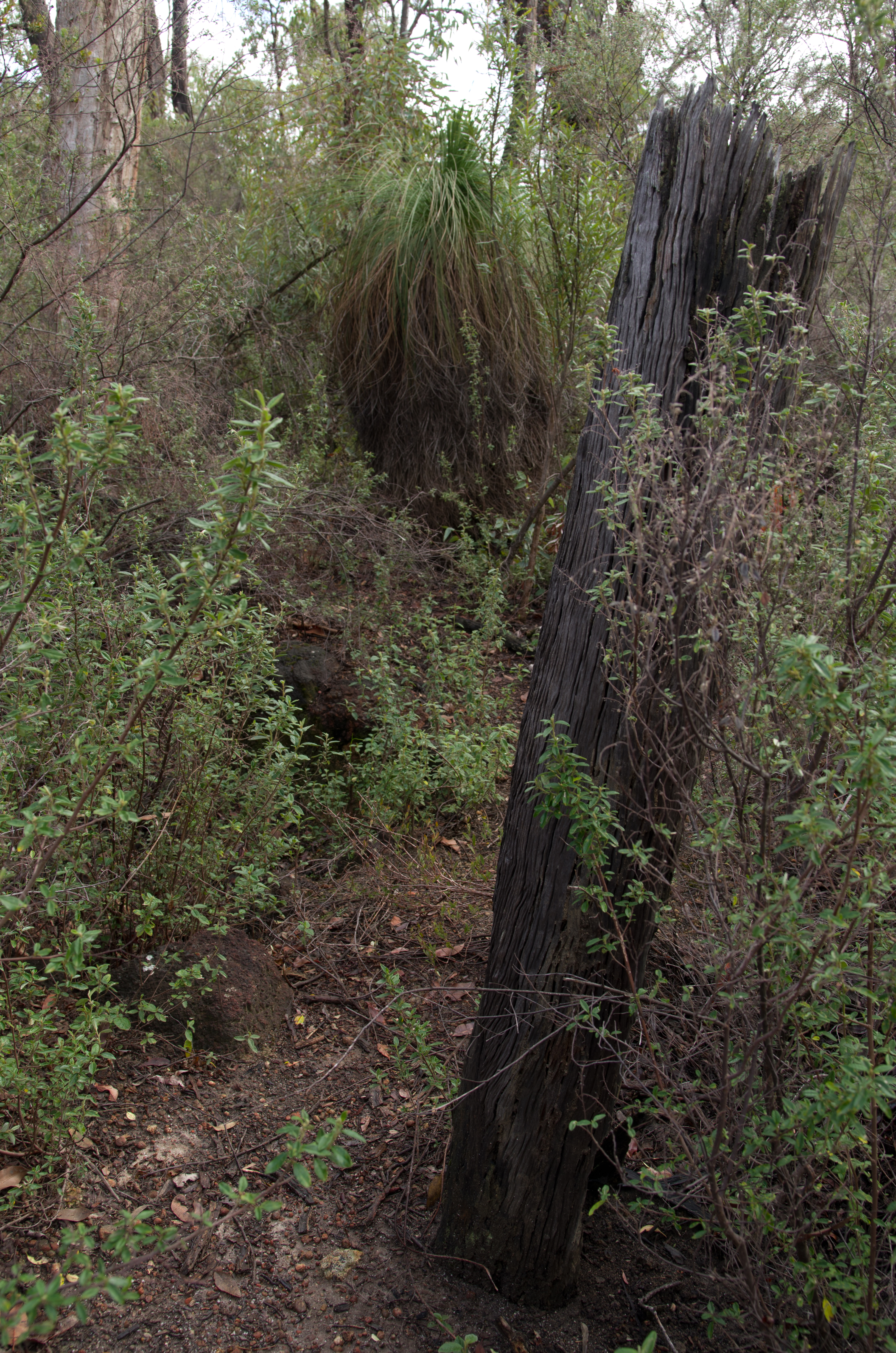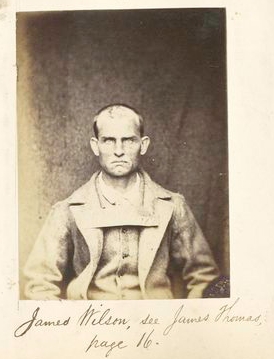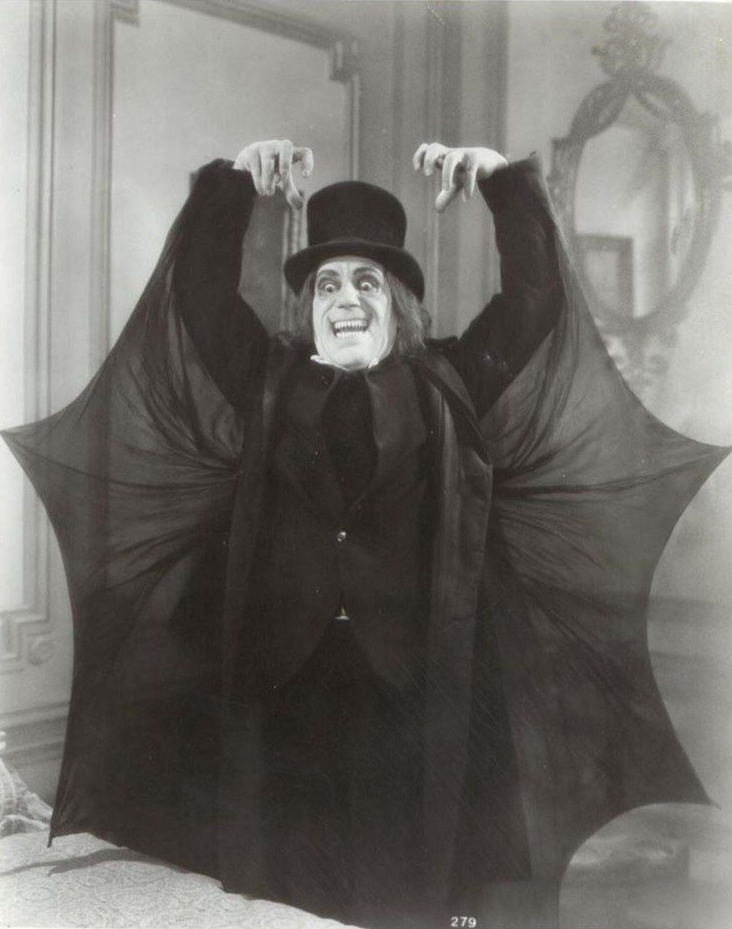|
Moondyne
''Moondyne'' is an 1879 novel by John Boyle O'Reilly. It is loosely based on the life of the Western Australian convict escapee and bushranger Moondyne Joe. It is believed to be the first ever fictional novel set in Western Australia. In 1913, Melbourne film director W. J. Lincoln made a silent film of the same name. Background O'Reilly was a Fenian revolutionary who was transported as a convict to Western Australia. During his time in Western Australia's penal system. After thirteen months in Western Australia, O'Reilly escaped the colony on board the American whaling ship ''Gazelle''. He arrived in America in 1869 and settled in Boston, where he established himself as a respected journalist, newspaper editor, novelist and poet, and later helped orchestrate the 1876 Catalpa rescue of six Fenian convicts from Western Australia. Around the time O'Reilly was stationed in Bunbury in 1868, he had begun to hear about the exploits of convict Joseph Bolitho Johns aka Moondyne Joe, ... [...More Info...] [...Related Items...] OR: [Wikipedia] [Google] [Baidu] |
Moondyne Joe
Joseph Johns ( February 1826 – 13 August 1900), better known as Moondyne Joe, was an English convict and Western Australia's best-known bushranger. Born into poor and relatively difficult circumstances, he became something of a petty criminal robber with a strong sense of self-determination. He is remembered as a person who had escaped multiple times from prison. Biography Child Hood Born in Cornwall, England, around 1826 and raised as Protestant. He was baptised in the Parish Church at Wendron, married at Johnston Memorial Congregational church at Fremantle, and buried in the Anglican section of Fremantle Cemetery. Despite claims that he was Roman Catholic, there is no evidence for this and would be incredibly unusual in Cornwall. He was the third of three children of blacksmith Thomas Johns (1799–1833) and his wife Mary Bolitho (1804–1860). Joe was a tall man with black hair and hazel-coloured eyes, and it is likely that he contracted smallpox in his youth as, lat ... [...More Info...] [...Related Items...] OR: [Wikipedia] [Google] [Baidu] |
John Boyle O'Reilly
John Boyle O'Reilly (28 June 1844 – 10 August 1890) was an Irish poet, journalist, author and activist. As a youth in Ireland, he was a member of the Irish Republican Brotherhood, or Fenians, for which he was transported to Western Australia. After escaping to the United States, he became a prominent spokesperson for the Irish community and culture through his editorship of the Boston newspaper ''The Pilot'', his prolific writing and his lecture tours. Born in Dowth, O'Reilly moved to his aunt's residence in England as a teenager and became involved in journalism and shortly after became involved in the military. He left the military however in 1863 after becoming angry with the army's treatment of the Irish, and returned to Ireland the same year. In 1864 he joined the Irish Republican Brotherhood under an assumed name and was part of the group for two years until he and many others were arrested by authorities in early 1866. After a trial the same year he was sentenced to de ... [...More Info...] [...Related Items...] OR: [Wikipedia] [Google] [Baidu] |
Bushranger
Bushrangers were originally escaped convicts in the early years of the British settlement of Australia who used the bush as a refuge to hide from the authorities. By the 1820s, the term had evolved to refer to those who took up "robbery under arms" as a way of life, using the bush as their base. Bushranging thrived during the gold rush years of the 1850s and 1860s when the likes of Ben Hall, Bluecap, and Captain Thunderbolt roamed the country districts of New South Wales. These " Wild Colonial Boys", mostly Australian-born sons of convicts, were roughly analogous to British "highwaymen" and outlaws of the American Old West, and their crimes typically included robbing small-town banks and coach services. In certain cases, such as that of Dan Morgan, the Clarke brothers, and Australia's best-known bushranger, Ned Kelly, numerous policemen were murdered. The number of bushrangers declined due to better policing and improvements in rail transport and communication technology, su ... [...More Info...] [...Related Items...] OR: [Wikipedia] [Google] [Baidu] |
Roy Redgrave
George Ellsworthy "Roy" Redgrave (26 April 1873 – 25 May 1922) was an English stage and silent film actor. Redgrave is considered to be the first member of the Redgrave acting dynasty. Early life Born George Edward Redgrave in 122 Kennington Road, Kennington, a district of Lambeth in South London in 1873, he was the eldest son of George Augustus Redgrave (1851–81), a maker of the board game Bagatelle, and Zoe Beatrice Elsworthy (''née'' Pym, later Howard; 1856–1936). By 1897, he was professionally known as Roy Redgrave apparently in the belief that he was descended from Rob Roy. The Redgrave family originated in the Northamptonshire village of Crick. Redgrave also assumed the middle name "Elsworthy" from his mother, and his sister took the stage name Dolly Elsworthy. Redgrave was the eldest of five siblings. Family and career His first wife was actress Ellen Maud Pratt, the daughter of prosperous Devon farmer, John Dew Pratt of Buckland Monachorum. Her stage name wa ... [...More Info...] [...Related Items...] OR: [Wikipedia] [Google] [Baidu] |
Godfrey Cass
Godfrey Cass (1867 – 14 May 1951) was an Australian actor in the silent era. Between 1906 and 1935 he acted in nineteen film roles. He played Ned Kelly three times, and also had roles in a number of other bushranger movies including '' A Tale of the Australian Bush'' (1911) and '' Moondyne'' (1913). Biography The son of the Governor of Melbourne Gaol, John Buckley Castieau (1831–1885), Godfrey Cass was born Godfrey Castieau in 1867, one of seven children. As a child he spent a lot of time around the gaol and met Ned Kelly just before Kelly was hung. He began acting in late 1883 or 1884 for J. C. Williamson Ltd. He married Hilda Fraser, with whom he often appeared on stage, in 1894. His peak years as an actor were from 1903 to 1914, usually playing the villain in melodramas. Cass appeared in his first film in 1911 for the Australian Life Biography Company, and followed it with two more movies for the same company. Two years later he partnered with W. J. Lincoln to mak ... [...More Info...] [...Related Items...] OR: [Wikipedia] [Google] [Baidu] |
George Bryant (actor)
George Edwin Bryant (1862 – 26 November 1943) was an Australian actor in the silent era. Between 1913 and 1936 he acted in eleven film roles, including starring roles in ''The Sick Stockrider'' and ''Moondyne''. Bryant died in his home in South Yarra, Victoria South Yarra is an inner-city suburb in Melbourne, Victoria, Australia, 4 km south-east of Melbourne's Melbourne central business district, Central Business District, located within the Cities of City of Melbourne, Melbourne and City of Sto ... on 26 November 1943 he was 81. Filmography References * ;Specific 1862 births 1943 deaths Australian male silent film actors 20th-century Australian male actors {{Australia-film-actor-stub ... [...More Info...] [...Related Items...] OR: [Wikipedia] [Google] [Baidu] |
Lincoln-Cass Films
Lincoln Cass Films was a short-lived Australian film production company. History Formed in July 1913, its principal filmmakers were W. J. Lincoln and Godfrey Cass and the managing director of the company was H. Dean Stewart. Charles Wheeler was stage manager and Maurice Bertel was the cinematographer. The company hired actors from Melbourne theatre along with "Australian bush riders". It also occasionally gave live performances. Movies were made at a glass-roofed studio in Cole Street in the Melbourne suburb of Elsternwick. Locations were shot in bushland near the town of Healesville. Between July and October 1913 they made eight features, of which only ''The Sick Stockrider'' survives today.Graham Shirley and Brian Adams, ''Australian Cinema: The First Eighty Years'', Currency Press 1989 p 42 According to one report: The idea of the management is to produce the best pictures possible and though the market at this end of the globe is limited, and they are, in consequence, more sev ... [...More Info...] [...Related Items...] OR: [Wikipedia] [Google] [Baidu] |
Convict Era Of Western Australia
The convict era of Western Australia was the period during which Western Australia was a penal colony of the British Empire. Although it received small numbers of juvenile offenders from 1842, it was not formally constituted as a penal colony until 1849. Between 1850 and 1868, 9,721 convicts were transported to Western Australia on 43 convict ship voyages. Transportation ceased in 1868, but it was many years until the colony ceased to have any convicts in its care. Convicts at King George Sound The first convicts to arrive in what is now Western Australia were convicts of the New South Wales penal system, sent to King George Sound in 1826 to help establish a settlement there. At that time, the western third of Australia was unclaimed land known as New Holland. Fears that France would lay claim to the land prompted the Governor of New South Wales, Ralph Darling, to send Major Edmund Lockyer, with troops and 23 convicts, to establish the King George Sound settlement. Lockyer's pa ... [...More Info...] [...Related Items...] OR: [Wikipedia] [Google] [Baidu] |
Maurice Bertel
Maurice Bertel (1871 – 17 May, 1930) was a French-born cinematographer who worked mostly in Australia. He moved to Australia in 1890 and learned his trade with local film companies. From 1907 he supervised the weekly newsreel made by Pathe Freres in Melbourne, staying with them for a number of months when they merged with Australasian Films in 1913. He then went to work for Lincoln-Cass Films and J. C. Williamson Ltd on their feature films, before joining Herschell's in Melbourne as a technical adviser.Andrew Pike and Ross Cooper, ''Australian Film 1900–1977: A Guide to Feature Film Production'', Melbourne: Oxford University Press, 1998, p41 Filmography *''The Sick Stockrider'' (1913) *''Moondyne'' (1913) *'' The Remittance Man'' (1913) *''Transported'' (1913) *'' The Road to Ruin'' (1913) *''The Crisis'' (1913) *''The Reprieve'' (1913) *'' The Wreck'' (1913) References External linksMaurice Bertelat National Film and Sound Archive The National Film and Sound ... [...More Info...] [...Related Items...] OR: [Wikipedia] [Google] [Baidu] |
Lost Film
A lost film is a feature or short film that no longer exists in any studio archive, private collection, public archive or the U.S. Library of Congress. Conditions During most of the 20th century, U.S. copyright law required at least one copy of every American film to be deposited at the Library of Congress at the time of copyright registration, but the Librarian of Congress was not required to retain those copies: "Under the provisions of the act of March 4, 1909, authority is granted for the return to the claimant of copyright of such copyright deposits as are not required by the Library." A report created by Library of Congress film historian and archivist David Pierce claims: * 75% of original silent-era films have perished. * 14% of the 10,919 silent films released by major studios exist in their original 35 mm or other formats. * 11% survive only in full-length foreign versions or film formats of lesser image quality. Of the American sound films made from 1927 to 1 ... [...More Info...] [...Related Items...] OR: [Wikipedia] [Google] [Baidu] |
AustLit
AustLit: The Australian Literature Resource (also known as AustLit: Australian Literature Gateway; and AustLit: The Resource for Australian Literature), usually referred to simply as AustLit, is an internet-based, non-profit collaboration between researchers and librarians from Australian universities, led by the University of Queensland (UQ), designed to comprehensively record the history of Australian literary and story-making cultures. AustLit is an encyclopaedia of Australian writers and writing. BlackWords is a landmark research project by and within AustLit that details the lives and work of Indigenous Australian authors, which includes Australian Aboriginal and Torres Strait Islander writers and storytellers. History AustLit was founded in 2000, when several independent databases on a variety of themes related to literary studies was created from work done by research groups at eight universities. The first dataset comprised about 300,000 fairly simple biographical and ... [...More Info...] [...Related Items...] OR: [Wikipedia] [Google] [Baidu] |
The Prahran Telegraph
The ''Prahran Telegraph'' was a weekly newspaper published from 1860 to 1930 in Prahran, an inner-suburb of the city of Melbourne, Australia. No copy pre-1866 is known to have survived. From 1866 (or earlier) until December 1888, the paper was called the ''Telegraph and St Kilda, Prahran and South Yarra Guardian''. From January 1889 until 7 December 1902, the paper was known simply as the ''Prahran Telegraph''. From 13 December 1902 the banner head read the ''Prahran Telegraph, with which is incorporated the St Kilda Advertiser and the Malvern Argus''. The newspaper was probably started by Howard Spensley, who sold it within several years to William Osment. The preceding ''Prahran and St Kilda Advertiser'' was first published by John Hartley in 1857, and continued until at least 1861. The Osment family owned the ''Telegraph'' until 1882, and again from 1895-1905. Henry Osment was prominent in local affairs and on Prahran Council, serving as Mayor for 1888/89. In general, ... [...More Info...] [...Related Items...] OR: [Wikipedia] [Google] [Baidu] |





